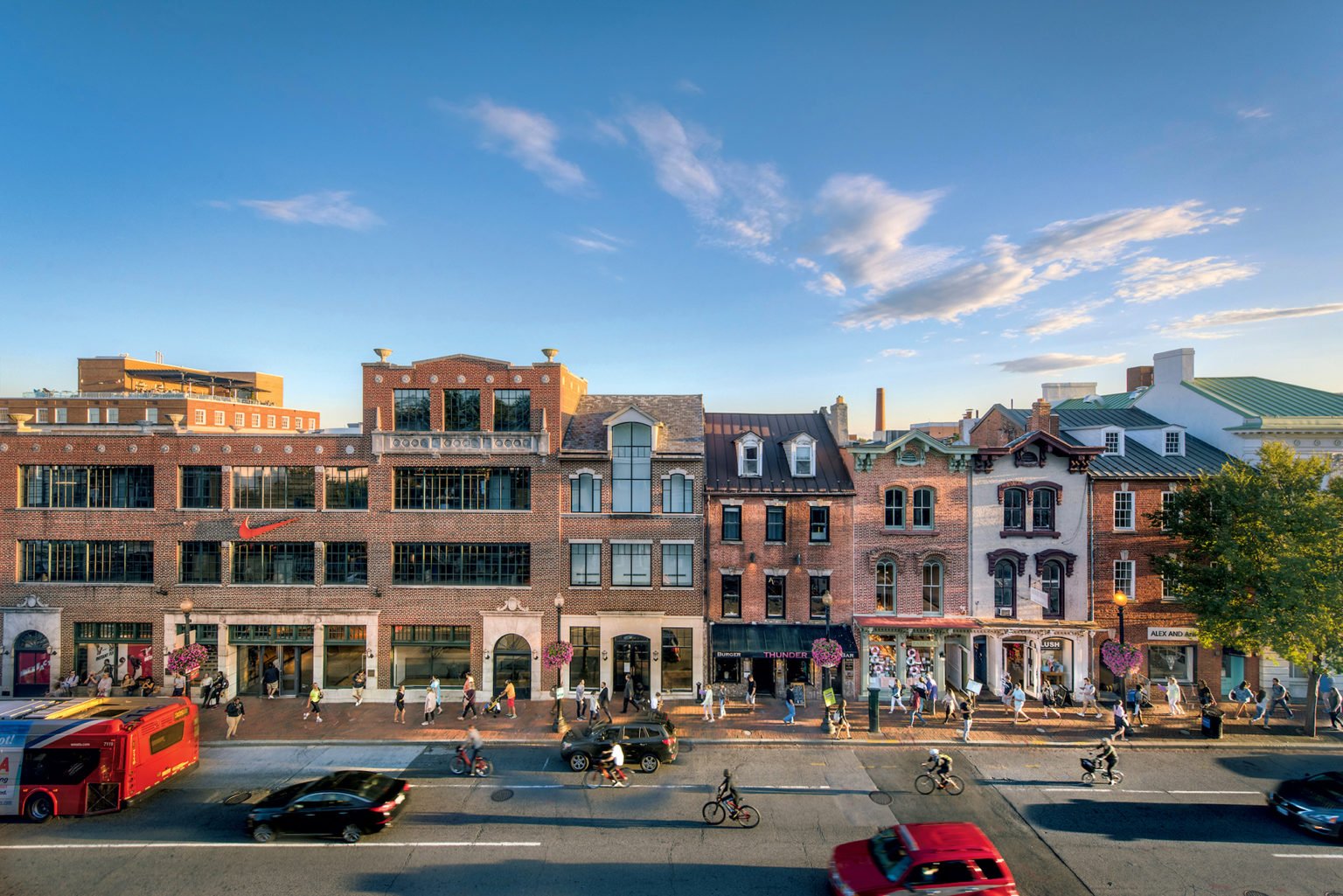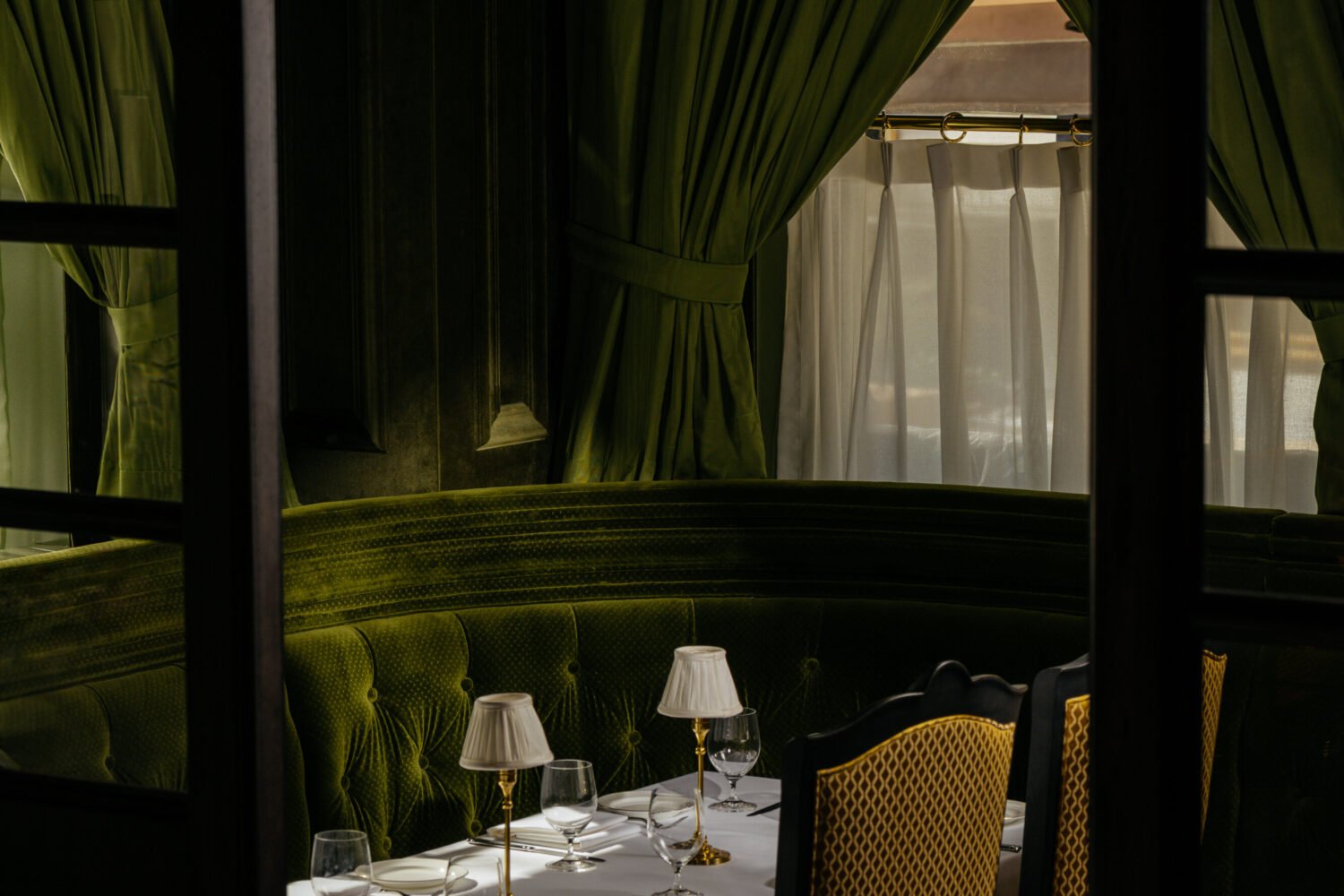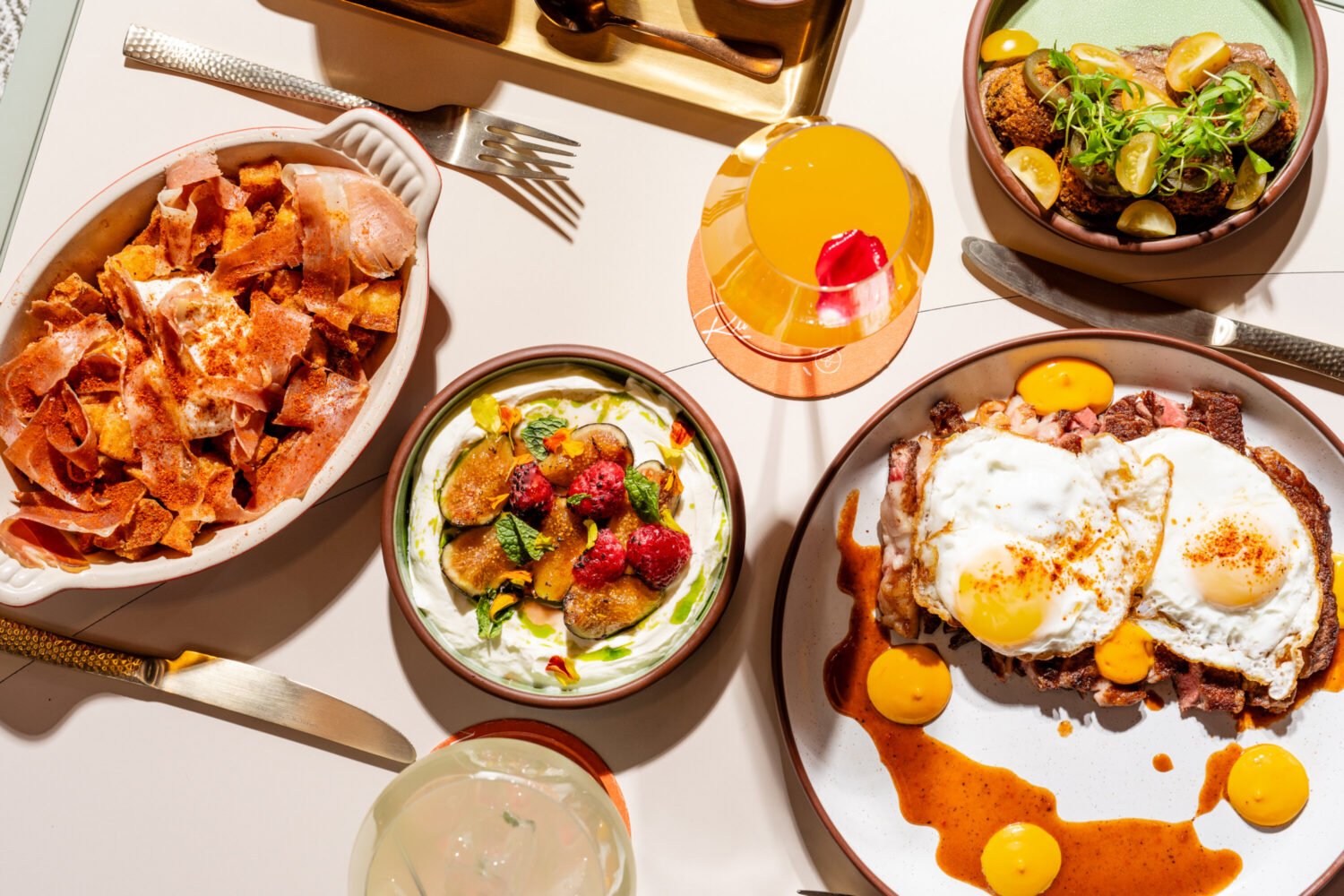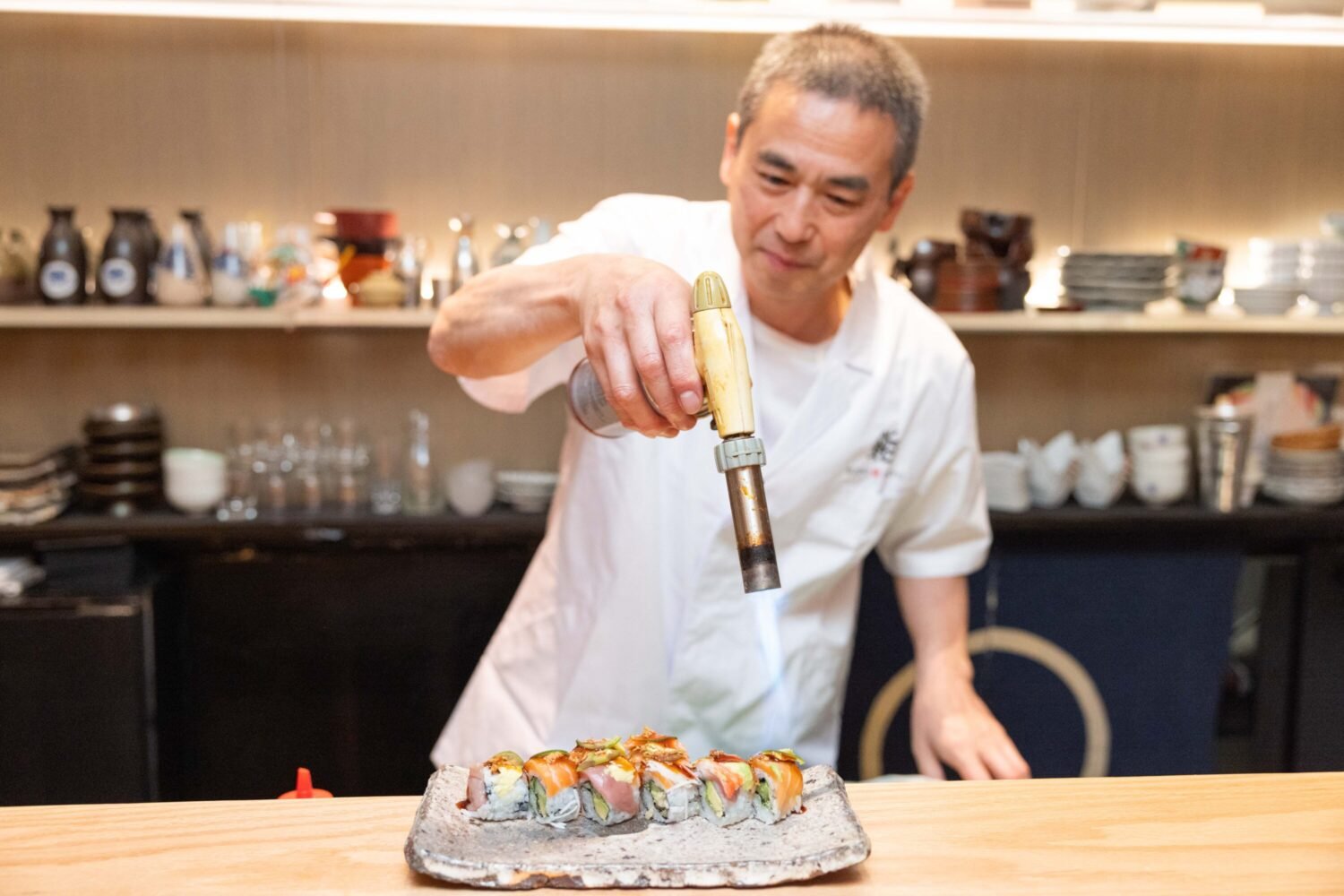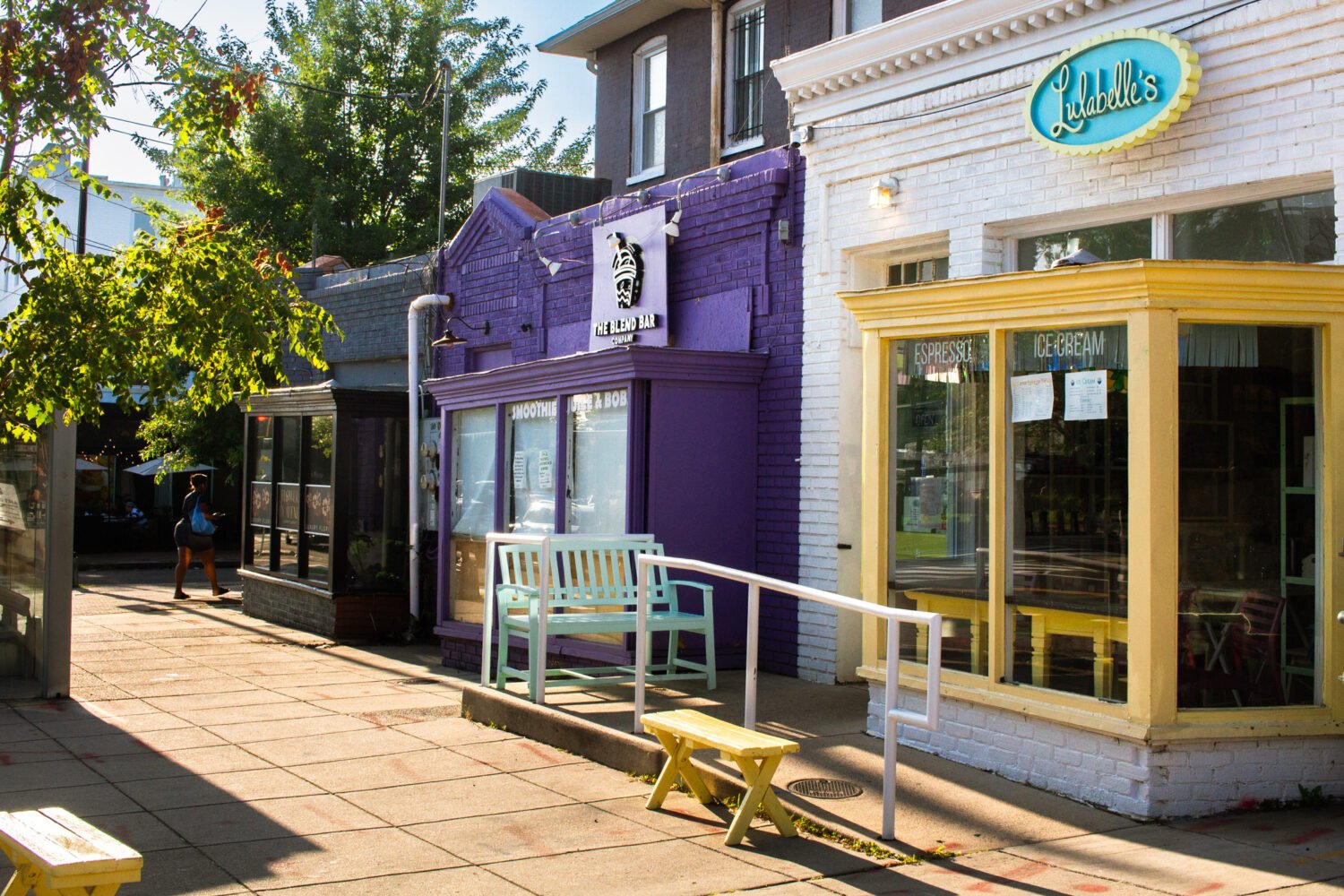Georgetown may have plenty of restaurants, but it’s been decades since the neighborhood was a hip place to go out. With a few notable exceptions, talk about its dining scene in recent years has mostly centered around which celeb was spotted at Cafe Milano or Fiola Mare and whether Baked & Wired is better than Georgetown Cupcake (obviously it is). Rightly or wrongly, Georgetown has been stuck with a reputation for tourists and college kids and the kind of people who go to Sally Quinn dinner parties.
But look at the lineup of restaurants on the way—and those recently opened—and Georgetown is where you’ll find some of DC’s most exciting newcomers. There’s new energy building up in the storied neighborhood. Dare we even say . . . Georgetown is cool again?
Hear us out. Perhaps DC’s biggest, splashiest dining debut for 2023 will be an M Street Italian restaurant and market from Stephen Starr, the hitmaker behind Le Diplomate, and Nancy Silverton, the acclaimed Los Angeles chef credited with popularizing sourdough and artisan breads across the US. The $10 million offshoot of Silverton’s Michelin-starred Osteria Mozza will feature wood-burning ovens for thin-crust pizzas, handmade pastas, plus a prosciutto and mozzarella bar in the prominent former home of Dean & Deluca. Given Starr’s track record not just in DC (he also co-owns St. Anselm), but New York and his hometown Philly, it’s pretty much guaranteed to be one of the hottest tables in town. And where Starr goes, others tend to want to follow.
Starr and Silverton, though, are big brands in a corridor already packed with big brands. What’s really catching our eye is the local talent migrating to the neighborhood. Most notably, Michael Rafidi, the chef behind hit Levantine restaurant Albi in Navy Yard. He recently expanded his popular all-day cafe Yellow to Wisconsin Avenue with an evening menu coming soon. And there are some up-and-comers like Zach Ramos and Amy Phan of Ama Ami, the pandemic-born pop-up offering stunning takeout chirashi bowls and private “homakase” feasts. They’re opening a Japanese cafe and omakase counter called Two Nine in a Georgetown alley in late spring.
They join relatively recent additions already stepping up the neighborhood’s rep: Mediterranean lunch counter Green Almond Pantry, caviar and Champagne bar Apéro, and French hotspot Lutèce (named one of the 50 most exciting restaurants in America by the New York Times last year), to name a few.
So, why is a Georgetown dining renaissance happening now?
“Covid basically cleared the slate,” says longtime restaurant real estate broker John Asadoorian. “The rents were too high. There weren’t any vacant spaces. So the restaurateurs and the chefs found it hard to try to do deals in Georgetown. Now, there’s more interest because there’s more space. There’s opportunity.”
Rafidi says that was certainly true for him. Georgetown was never seriously on his radar when he began looking for spaces for Albi in 2017: “It just didn’t seem like it was a viable option…I didn’t think I could afford it.”
When Rafidi started looking to expand Yellow, he initially focused his search near Navy Yard. Then, he was approached by landlord Ezra Glass, who (along with his wife Jessica Glass) also brought fine-dining restaurant Reverie and mini food hall Grace Street Collective to Georgetown. Rafidi liked the idea of working with a smaller landlord rather than a giant commercial real estate firm.
It was also Ezra Glass who recruited Japanese sensation Ama Ami—first for a pop-up in Grace Street Collective and then to a two-story alleyway building off 31st Street, Northwest. Phan says they hope to bring a bit of character, “imperfection” even, to an area often associated with glossy shops and boutiques. They were drawn to the idea of an intimate tucked-away locale that you have to purposely seek out: “There’s much more of a sense of the diners feeling important. They have a much more meaningful dining experience,” Ramos says.
Asadoorian has seen an intentional effort by at least a few Georgetown property owners to build back differently in the wake of the pandemic. In 2020, when businesses shuttered and storefronts were boarded up, Asadoorian took a walk through the neighborhood with prominent landlord Richard Levy. They started talking about what a comeback—or rather “the next Georgetown”—could look like. In the years since, Asadoorian has been working with Levy to bring that vision to his properties.
“We purposely talked to tenants that had a story, that it wasn’t just a retailer fueled by private equity, but somebody that can instill character and community,” Asadoorian says. “Now you’re seeing a very deliberate effort to not just go back to selling out to create chain stores paying the highest rent, but a mix.”
It also doesn’t hurt that Georgetown lifted its 27-year liquor license moratorium for restaurants in 2016. (There continues to be a cap on tavern and nightclub licenses.) The neighborhood groups that led the change said the moratorium prevented Georgetown from partaking in DC’s dining renaissance to the same extent as other non-moratorium areas like Shaw, 14th Street, or H Street Northeast.
But Asadoorian says the change didn’t have the immediate impact many predicted given other market conditions at the time: “If a tenant can’t find a space and the rents are still twice what a restaurant can pay, it doesn’t matter if there’s a liquor license moratorium or not.”
Asadoorian says other sought-after DC neighborhoods among his restaurant clients include the Wharf, Navy Yard, and Union Market District (not to mention rising interest in the burbs). Ironically, the corridor most synonymous with DC’s dining boom over the past decade—14th Street—is going the way of Georgetown with national chains and sky-high rents.
“The more discerning restaurateurs that really make neighborhoods and bring people in, they’re not so much interested in 14th Street,” Asadoorian says. “Of the top markets, I’d say 14th Street is at the bottom. But that doesn’t mean there’s restaurants closing or it’s very hard to find space, it’s just very expensive.”

